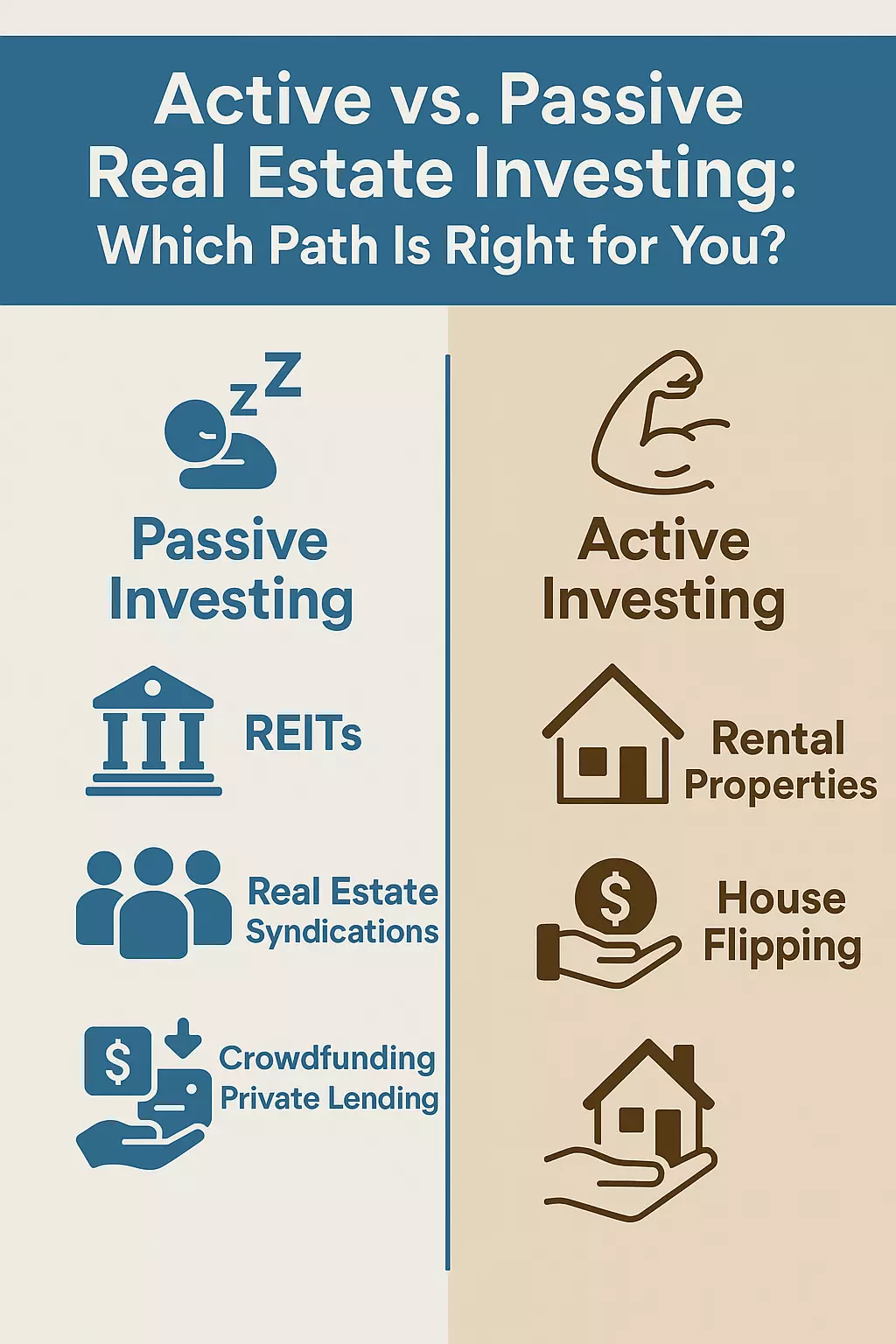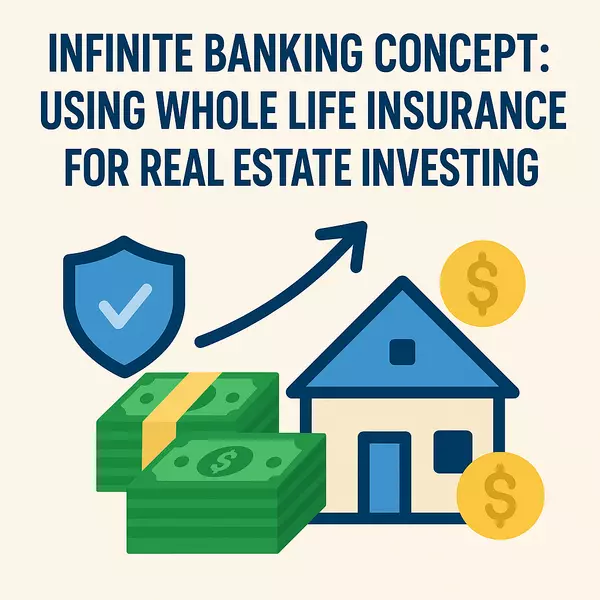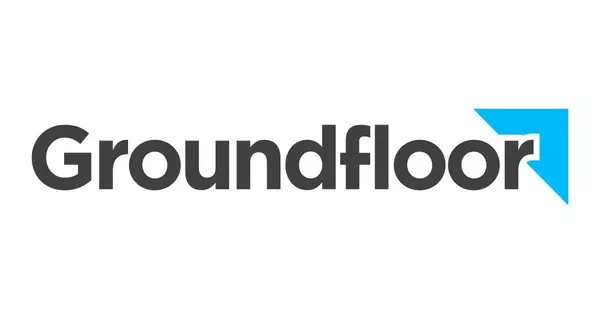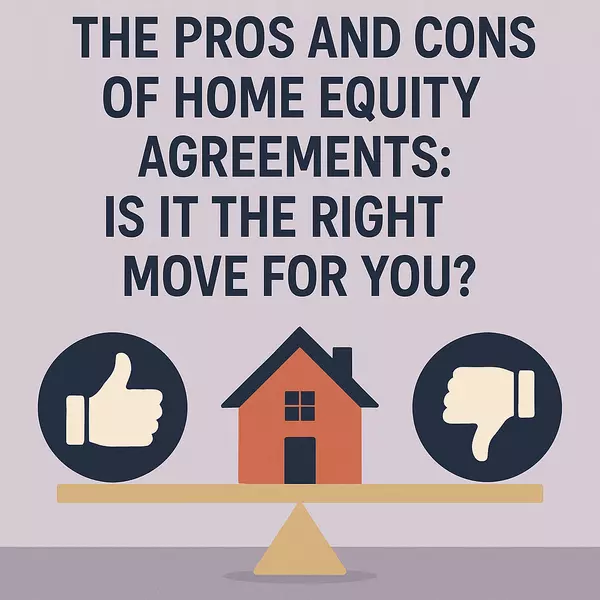Active vs. Passive Real Estate Investing: Which Path Is Right for You?

🏠 Active vs. Passive Real Estate Investing: Which Path Is Right for You?
Real estate investing offers a diverse spectrum of strategies—from hands-on to hands-off. Understanding active and passive paths is essential when choosing the right fit based on your goals, time, capital, and risk appetite. Below, we explore four key strategies: REITs, syndications, rentals, and flipping.
1. 💤 Passive Investing
A. REITs (Real Estate Investment Trusts)
-
What they are: Publicly traded companies owning income-generating properties (offices, apartments, retail, etc.) that distribute ≥90% of taxable income as dividends (en.wikipedia.org).
-
Pros:
-
Easily buy/sell like stocks—excellent liquidity (investopedia.com)
-
Wide diversification across hundreds of properties (gatsbyinvestment.com)
-
-
Cons:
-
You lack transparency and say over underlying assets (gatsbyinvestment.com)
-
Returns affected by market volatility and interest rates (hlcequity.com)
-
B. Real Estate Syndications
-
Structure: Investors pool funds led by a sponsor; you typically invest as a passive LP (highpeakscapital.com).
-
Pros:
-
Access to institutional-grade deals (multifamily, retail, etc.) usually unavailable individually (investopedia.com)
-
Depreciation and pass-through tax benefits (e.g., 1031 exchanges)
-
-
Cons:
-
High min. investment (often $50K+) and typically limited to accredited investors (biggerpockets.com)
-
Illiquid: capital often tied up for 5–7 years (biggerpockets.com)
-
C. Crowdfunding / Private Lending
-
A newer passive angle, letting non-accredited investors enter with small amounts via platforms (e.g., Groundfloor, FNRP) (blog.groundfloor.com).
-
Can offer strong short-term yields, though often project-specific and less liquid (investopedia.com).
2. 💪 Active Investing
A. Rental Properties
-
Involves: Owning and managing homes or apartments directly—covering acquisition, renovation, tenant management, etc. (multivestorsgroup.com).
-
Pros:
-
Full control over property, tenants, financing, and exit strategy
-
Potential passive income, plus capital appreciation and tax benefits
-
-
Cons:
-
Requires considerable time (20–40 hrs/week) and skills (multivestorsgroup.com)
-
Large upfront capital, complex risk exposure, and potential for tenant headaches (blog.groundfloor.com)
-
B. House Flipping
-
What it is: Buying undervalued homes, renovating them, and selling quickly for profit (en.wikipedia.org).
-
Pros:
-
Quick turnaround and high profit potential when market conditions align
-
Hands-on control over renovations, pricing, and timing gives flexibility
-
-
Cons:
-
Highly operational—requires construction, market timing, and exit strategies
-
Risk of cost overruns, market delays, and financing challenges
-
3. 🧭 Quick Comparison
| Strategy | Type | Liquidity | Control | Capital Needed | Hands-On? | Returns Potential |
|---|---|---|---|---|---|---|
| REITs | Passive | High | None | Low (<$100/share) | No | Moderate, market-based |
| Syndications | Passive | Low | Little | High (~$50K+) | No | Solid, tax-advantaged |
| Crowdfunding/Lending | Passive | Moderate-Low | Little | Low ($500–$1K) | No | Variable, project-based |
| Rental Properties | Active | Low | Full | High (20% down) | Yes (20–40 hrs/wk) | Strong + tax benefits |
| House Flips | Active | High (when sold) | Full | High (rehab costs) | Yes (project-based) | High, if executed well |
4. 🧠 Which Path Is Right for You?
-
Time-strapped or new investors?
Go with REITs or crowdfunding for easy entry and low involvement. -
Accredited investor seeking passive yield with tax perks?
Consider syndications, but be ready for long hold times. -
Hands-on, enjoy deals & market control?
Rentals or flips could be great—but budget for 20+ hours weekly and strong capital reserves. -
Looking for a middle ground?
A blended portfolio of REITs, a small rental, and a crowdfund position can balance control, diversity, and effort.
5. 🧭 Bottom Line
Choosing between active and passive real estate doesn’t need to be all-or-nothing. Your ideal path depends on:
-
Time & lifestyle
-
Capital available
-
Desire for control
-
Risk tolerance
-
Tax goals
Many investors start passively, then—over time—graduate into active strategies as they gain confidence, capital, and bandwidth.
Take the next step: outline your goals, assess your capacity, then pilot-test with a small REIT position or crowdfunding project. From there, build incrementally toward rentals or flips as experience and resources grow.
Let me know if you want deep dives on any of these strategies, or help with tools, platforms—or even your first deal steps!
Categories
- All Blogs (32)
- banking (7)
- building (1)
- buying (11)
- credit (4)
- development (1)
- finances (16)
- flipping (2)
- homebuyer (8)
- househacking (4)
- infinitebanking (1)
- insurance (1)
- investing (21)
- land (1)
- luxury (1)
- real estate (24)
- reit (1)
- renting (2)
- retirement (7)
- savings (3)
- secondhome (1)
- selfdirectedIRA (2)
- sellers (2)
- staging (1)
- taxes (1)
Recent Posts










GET MORE INFORMATION

